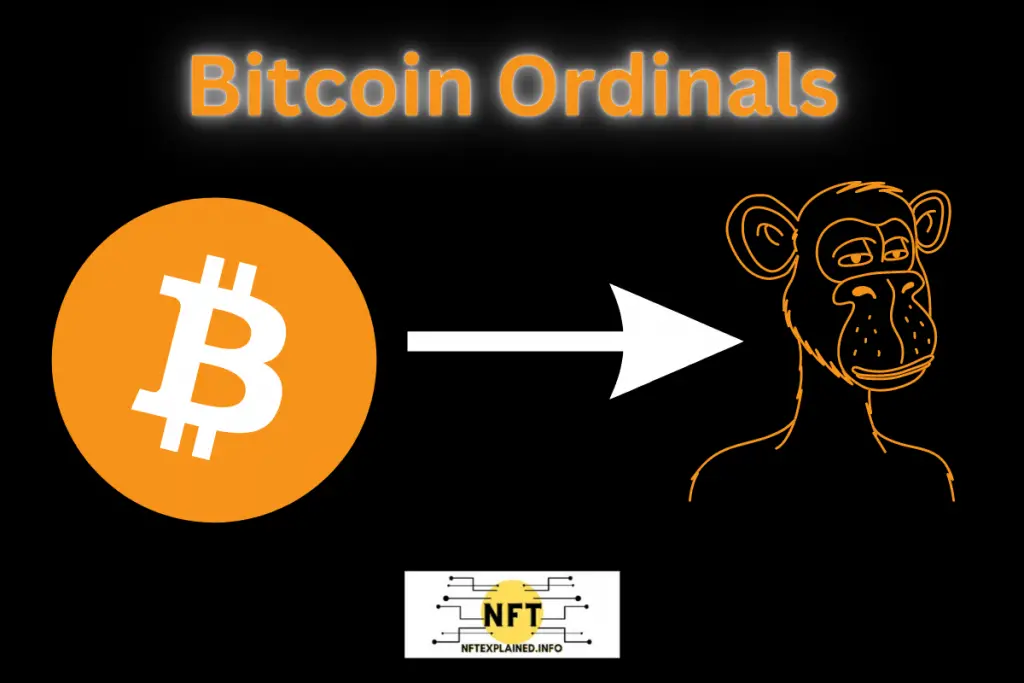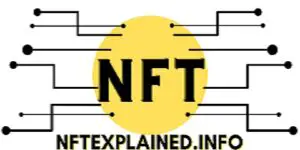
NFTs on the Bitcoin blockchain have officially been unleashed and investors are loving it. Floor prices for NFTs on the Bitcoin blockchain have skyrocketed in value and major, blue chip NFT teams like Yuga Labs (the creators behind Bored Ape Yacht Club) have already made plans to release a collection on the Bitcoin blockchain.
Before we get too far ahead of ourselves, what are Bitcoin Ordinals?
Bitcoin ordinals – essentially NFTs on the Bitcoin blockchain – are a new way for users to assign digital content to a Satoshi. Bitcoin NFTs’ attach digital content (or NFTs) to a Satoshi. Satoshi’s are the smallest unit that can be used in a BTC transaction and 100 million satoshis make 1 BTC.
While this may sound complex, stick around as our team will explain each aspect in simple terms.
First things first, we should note that each Bitcoin NFT – also known as an ordinal inscription – is tied to a Satoshi; each Satoshi is stored fully on-chain. This means the (NFT) which can be digital art, music files, videos, etc. are stored completely on the Bitcoin blockchain.
Previously, the vast majority of NFTs – which are minted atop the Ethereum blockchain – were not stored fully on-chain due to limited storage (specifically, a limit on block space). Instead, the vast majority of the actual digital content from the NFT were stored on Interplanetary File Systems – a peer to peer data storage system. More on that can be found in our team’s article linked here.
Now let’s get back to learning about Bitcoin ordinals. Casey Rodarmor, a former Bitcoin core developer, is leading this project. He found out that the recent Bitcoin protocol update known as Taproot made this all possible.
Now, let’s continue to explore the second largest impact that Bitcoin ordinals deliver, aside from the fact that they are stored fully on-chain.
How Do Satoshis Work With Bitcoin Ordinals (NFTs)?
Satoshis represent the smallest unit that can be used in a Bitcoin transaction. Each Bitcoin contains 100 million Satoshi’s and vice versa; 100 million Satoshi’s represent 1 Bitcoin. Users are now able to assign content (NFTs) to each Satoshi which are minted by computers running the Bitcoin protocol.
Now that you understand what Satoshis are and how they work, let’s examine how Satoshi’s impact Bitcoin Ordinals. Each Bitcoin ordinal (or NFT) receives a number; this number is assigned to every Satoshi based on when they were mined.
Before this update, each Satoshi was considered to be fungible as no unique, digital content could be assigned to this unit.
Casey Rodarmor created “Ordinal Theory” which allows each Satoshi to be unique and therefore allowing them to be tracked and traced individually.
For those not interested in assigning digital content to their Satoshi, there are no drawbacks to this update (code named Taproot) as this is simply an optional enhancement that some people are choosing to utilize. Satoshi are still used as a store of value and therefore as a way to pay for transactions.
What Are Inscriptions & How Do They Work With Satoshi’s (or BTC NFTs)?
Inscriptions are data pertaining to the NFT (i.e. code) that can be attached to Satoshi’s; they are unique pieces of data (e.g. art) that can be attached to each individual Satoshi. Each inscription, which is tied to the Satoshi, can be tracked and traded like typical Ethereum-based NFTs.
Satoshi’s combined with inscriptions, or unique data, is how Bitcoin Ordinals are possible.
Another unique feature that Bitcoin Ordinals bring about is that creators or those who are inscribing the unique data to a Satoshi are the ones that are paying for the gas fees. Unlike Ethereum and many other blockchains, the creator has to pay for the upfront cost… not the purchaser (who would typically pay for the minting cost in order to be the first owner of that NFT).
This critical distinction to other layer 1 protocol practices means there will likely be far less NFT projects built atop the Bitcoin network, simply due to the upfront costs. Previously, NFT teams that were creating atop the Ethereum network would have little risk creating huge numbers of digital assets as there would be no upfront costs incurred; Bitcoin NFTs change this.
How Will Bitcoin Ordinals Affect Bitcoin Transaction Fees?
Bitcoin transaction fees have increased with the rise of people minting Bitcoin NFTs; in order to mint, a Bitcoin node must verify the transaction. This means those looking to make regular transactions (i.e. sending BTC) and those looking to mint Bitcoin NFTs are competing amongst one another.
Since there are more people looking to make transactions, there is more desire for miners (or nodes that are verifying transactions on the Bitcoin blockchain); therefore, traders and buyers have experienced higher fees. This, of course, varies depending on the number of people looking to make a transaction at that given time.
Now, let’s examine what the community thinks about this recent update.
How Has The Community Reacted To Bitcoin NFTs?
While many are ecstatic about this use-case that was previously not possible, others have stated that they think Bitcoin NFTs are a waste of blockspace. Those opposed to Bitcoin NFTs have stated that Bitcoin was created solely to be a store of value.
As with anything, there will be arguments for and against; however, the vast majority of people – especially those on crypto Twitter – seem excited about the new possibilities that this opens up.
To conclude our article, let’s examine BTC NFT Marketplaces.
Are There Any Bitcoin NFT Marketplaces?
At this point in time, there are no Bitcoin NFT marketplaces and sales are taking place directly between buyers and sellers. This is because Bitcoin NFTs have arisen very recently and there is no doubt that marketplaces will spring up in the near future.
We hope you are just as excited as we are about NFTs and continue to stay informed at NFTexplained.info. To get the latest news in this rapidly evolving space, subscribe to our YouTube channel! Also consider following our team on Instagram & Twitter!
If you would like to support our team’s content creation please consider doing business with our partners:
Trade stocks & crypto on Webull – get 2 free stocks!
Buy a Ledger hardware wallet!US-based traders can get a crypto trading discount on Binance!

